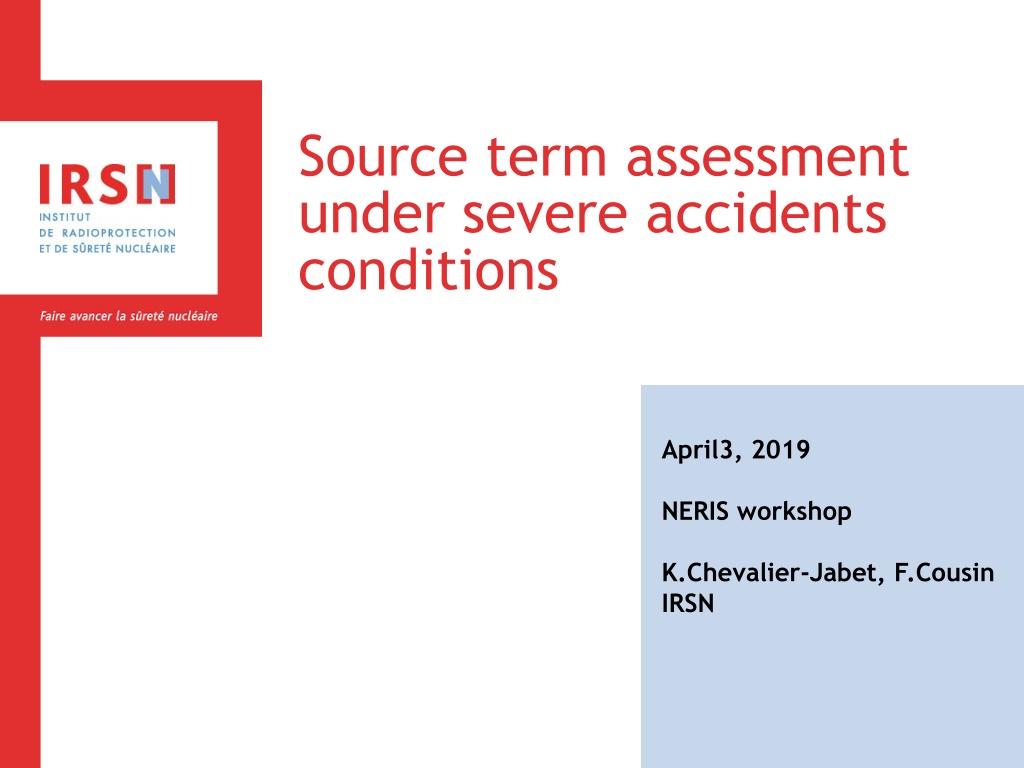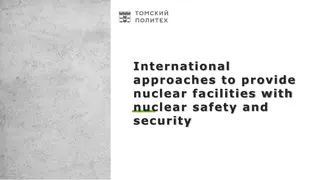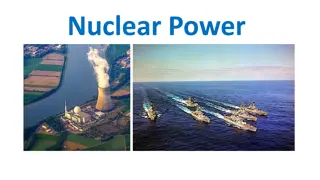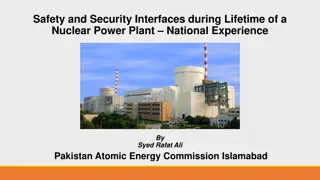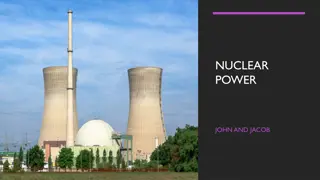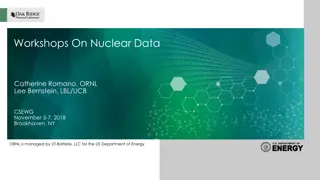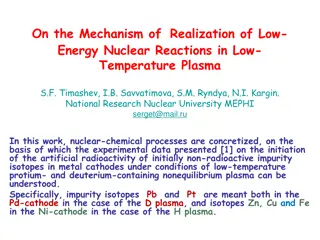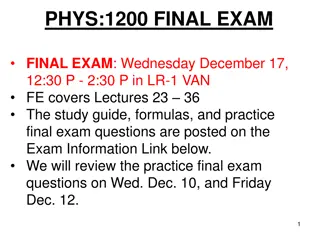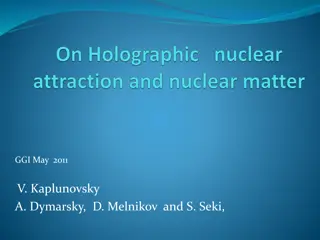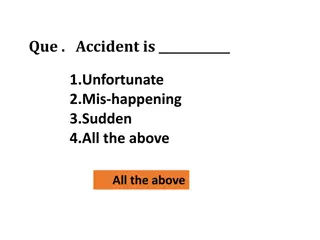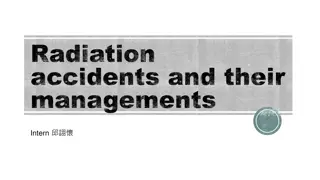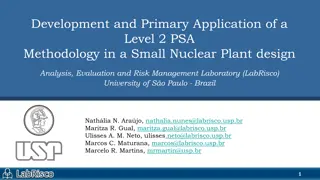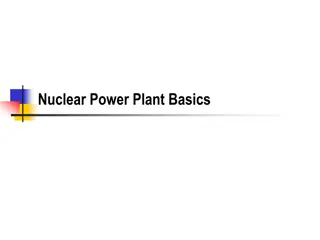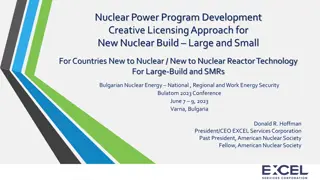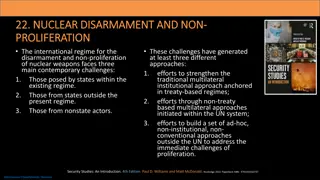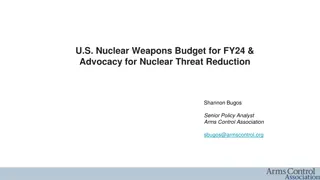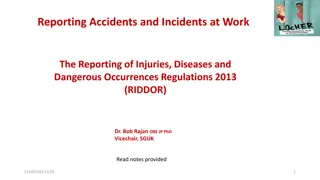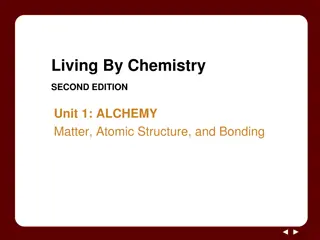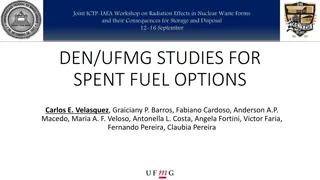Source Term Assessment in Severe Nuclear Accidents
Delve into the complexities of source term assessment under severe accidents conditions, focusing on core degradation, containment pressure buildup, radioactive species release, safety systems, iodine-related phenomenology, and assessing the radioactive source term's impact on the environment. This analysis encompasses the uncertainties and physical phenomena associated with severe accidents, providing insights from the NERIS workshop held in April 2019.
Download Presentation

Please find below an Image/Link to download the presentation.
The content on the website is provided AS IS for your information and personal use only. It may not be sold, licensed, or shared on other websites without obtaining consent from the author.If you encounter any issues during the download, it is possible that the publisher has removed the file from their server.
You are allowed to download the files provided on this website for personal or commercial use, subject to the condition that they are used lawfully. All files are the property of their respective owners.
The content on the website is provided AS IS for your information and personal use only. It may not be sold, licensed, or shared on other websites without obtaining consent from the author.
E N D
Presentation Transcript
Source term assessment under severe accidents conditions April3, 2019 NERIS workshop K.Chevalier-Jabet, F.Cousin IRSN
Contents Severe Nuclear accidents Phenomenology Source term assessment Uncertainties FASTNET and CONFIDENCE PROJECTS Conclusion TITRE DE LA PRESENTATION - DATE DE LA PRESENTATION 2 Source term assessment and uncertainties NERIS workshop, 3-5 April, 2019
Contents Severe Nuclear accidents Phenomenology Source term assessment Uncertainties FASTNET and CONFIDENCE PROJECTS Conclusion TITRE DE LA PRESENTATION - DATE DE LA PRESENTATION 3 Source term assessment and uncertainties NERIS workshop, 3-5 April, 2019
Severe accident Dewatering of the core to such an extent that fuel degradation can occur and result in the radioactive species release of Important physical phenomena : Core degradation Containment pressure build up Ex-vessel radioactive release Vessel rupture Molten corium concrete interaction 4 Source term assessment and uncertainties NERIS workshop, 3-5 April, 2019
Safety systems Safety injection (SI) containment spray system (CSS) Containment venting system Venting and filtration systems Ultimate Safety systems Passive sumps alkalinisation Additional cooling systems 5 Source term assessment and uncertainties NERIS workshop, 3-5 April, 2019
Iodine related phenomenology (containment) 6 Source term assessment and uncertainties NERIS workshop, 3-5 April, 2019
The source term to the environment Assessing a radioactive source term amounts to assess the ongoing situation and the status of the different parts of the plant (vessel, containment, availability of water supplies, electrical power, ), their consequences on the release of radioactive species to the environment. It also amounts to understand the nature of the radioactive species in the containment building the whereabouts of the radioactive species in the containment building Source term assessment and uncertainties NERIS workshop, 3-5 April, 2019 7
The source term to the environment Nearly all the aspects of the severe accidents phenomenology could be described as uncertain, so that in the end, assessing a source term comes to assessing an ongoing situation given The information we can get about the damaged power plant the lack of knowledge we have about the phenomenology that will affect or no the evolution of the situation. Classes of uncertainties Aleatory : random, or variability that can not be fully be reduced : scenario related or safety systems related Epistemic : lack of knowledge Tools : ASTEC code Embeds up to date knowledge about severe accident phenomena Models the safety systems behaviour Uncertainty propagation available 8 Source term assessment and uncertainties NERIS workshop, 3-5 April, 2019
Contents Severe Nuclear accidents Phenomenology Source term assessment Uncertainties FASTNET and CONFIDENCE PROJECTS Conclusion TITRE DE LA PRESENTATION - DATE DE LA PRESENTATION 9 Source term assessment and uncertainties NERIS workshop, 3-5 April, 2019
FASTNET and CONFIDENCE projects FASTNET project : european project dedicated to allow the emergence of harmonised approaches to manage future nuclear emergencies among European entities in charge of this management the sharing of knowledge on fundamentals on severe accidents phenomenology and on expertise methodologies for the operational management of nuclear/radiological emergencies WP 1: the production of a best estimate calculation grid specified according to : The initiator : Station BlackOut, Loss Of Cooland Accidents, Loss of Feedwater od Steam generators The safety systems failure instants IRSN contribution : 57 sequences, calculated with ASTEC tool 10 Source term assessment and uncertainties NERIS workshop, 3-5 April, 2019
FASTNET and CONFIDENCE projects WP2 and WP3 workpackages demonstrate that Bayesian Networks (BN) approaches can be efficient and relevant to be implemented in emergency centers IRSN contribution : build BN based on machine learning techniques Data Learning Scenario specification ASTEC Simulations Data Base Learn the structure of the BN Learn the parameters of the structure Validation 11 Source term assessment and uncertainties NERIS workshop, 3-5 April, 2019
FASTNET and CONFIDENCE projects Calculation grid specification The input deck models a French PWR 900 MW Scenario variables LOCA accidents ; size spans continuously from a fraction of an inch to 12 inches, and the break place can be either on cold or hot leg systems : no safety injection available CSS, can be working or not at the initiator time, and if not working, we assume there is no reparation. leak rate of the containment building, release routes. At vessel rupture, mass of the corium slump 12 Source term assessment and uncertainties NERIS workshop, 3-5 April, 2019
FASTNET and CONFIDENCE projects Calculation grid specification epistemic uncertainties FP release : addresses the feedback of IRSN experimental database ; addresses intact rod (not melted) or fuel magma configuration for volatile, semi-volatile, low volatiles FP families Iodine behavior: related to kinetics of the various reactions, gaseous fraction at the break, fraction of oxidized silver in the sumps Molten corium concrete interaction : uncertainties for properties such as emissivities, thermal properties of the corium/concrete, debris layer porosity, residual power partition between elements 13 Source term assessment and uncertainties NERIS workshop, 3-5 April, 2019
FASTNET and CONFIDENCE projects Resulting example bns and performances inference for Vessel Status: Validation dataset The unknown is the vessel integrity, (( VESSELSTATUS ) ; the other variables are used to build the query in the BN : For example : CSSAVAIL=[TRUE] and TGasC02=[302,329] The BN computes the most probable VESSELSTATUS according to the query If the result corresponds to the value in the validation dataset, successs Percentage of success for this type of inference : For all times of the accident, the lowest performance is 80% success Most of the times : 100% of success 14 Source term assessment and uncertainties NERIS workshop, 3-5 April, 2019
CONFIDENCE project WP 1 : Guidelines ranking uncertainties for atmospheric dispersion provide an assessment of the ability of the ensemble weather prediction systems to provide sufficient uncertainty information for dispersion Same input deck as FASTNET, same epistemic uncertainties Four initiators (size +/- 1 inch) break of 3 inches occurring on hot leg break of 3 inches occurring on cold leg break of eleven inches occurring on hot leg break of eleven inches occurring on cold leg 15 Source term assessment and uncertainties NERIS workshop, 3-5 April, 2019
CONFIDENCE project global release rate of the containment ranges in [1; 10] times the best-estimate amount best-estimate distribution of the leak rate to the various containment buildings [1; 2] times the best-estimate value. 16 Source term assessment and uncertainties NERIS workshop, 3-5 April, 2019
CONFIDENCE project results of the source term calculations Pressure in containment building Sand bed filter activation Xe 133 release little uncertainty on the first release time 11 inches, cold leg 17 Source term assessment and uncertainties NERIS workshop, 3-5 April, 2019
CONFIDENCE project results of the source term calculations organic aerosols Iodine species (here I131) Release uncertainties on 1. timing of events for gaseous species 2. Order of magnitude, due to speciation uncertainties oxides molecular 18 Source term assessment and uncertainties NERIS workshop, 3-5 April, 2019
Contents Severe Nuclear accidents Phenomenology Source term assessment Uncertainties FASTNET and CONFIDENCE PROJECTS Conclusion TITRE DE LA PRESENTATION - DATE DE LA PRESENTATION 19 Source term assessment and uncertainties NERIS workshop, 3-5 April, 2019
Conclusion Source term assessment : best estimate + uncertainties Uncertainties taken into account Related to scenario Related to epistemic uncertainties Not all uncertainties taken into account Filtration efficiencies Unknown behaviour (lacking models) Allows reasonable diagnosis of the situation according to the best of our knowldge (FASTNET) Provides variability ranges in timing and order of magnitude for dispersion and radiological consequences (CONFIDENCE) See IRSN friday presentation (Irene Korsakissok) for details on how the calculated source term were used for the elaboration of the guidelines describing source term uncertainties 20 Source term assessment and uncertainties NERIS workshop, 3-5 April, 2019
Thank you for your attention 21 Source term assessment and uncertainties NERIS workshop, 3-5 April, 2019
